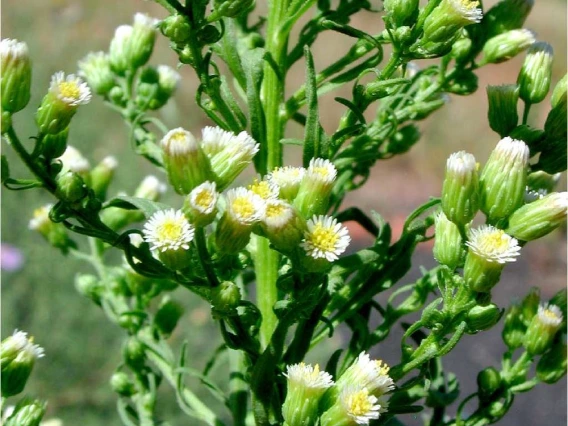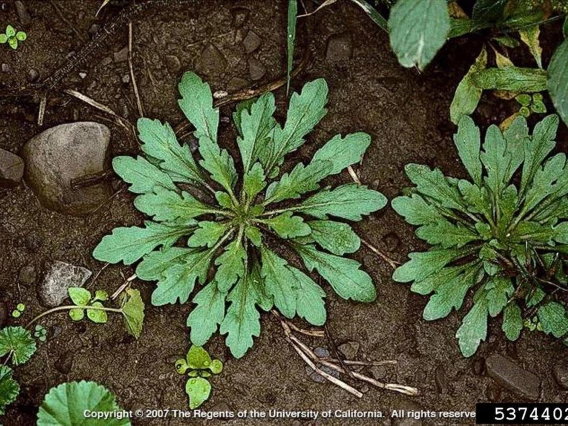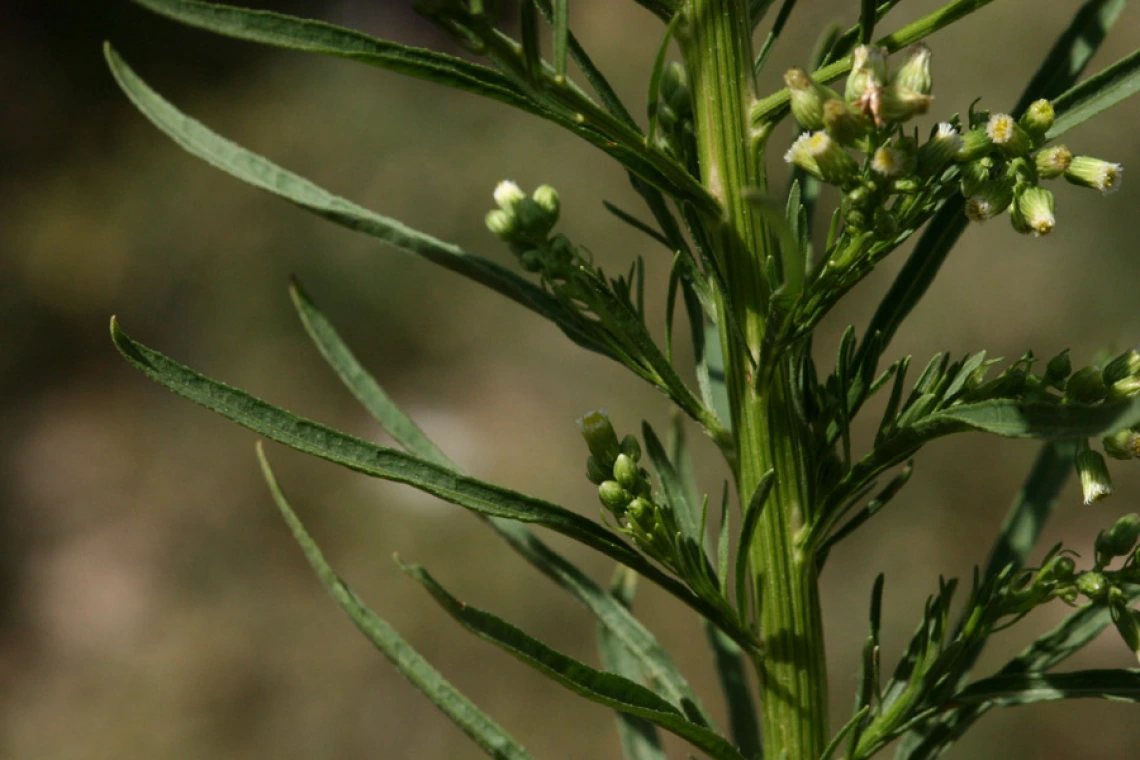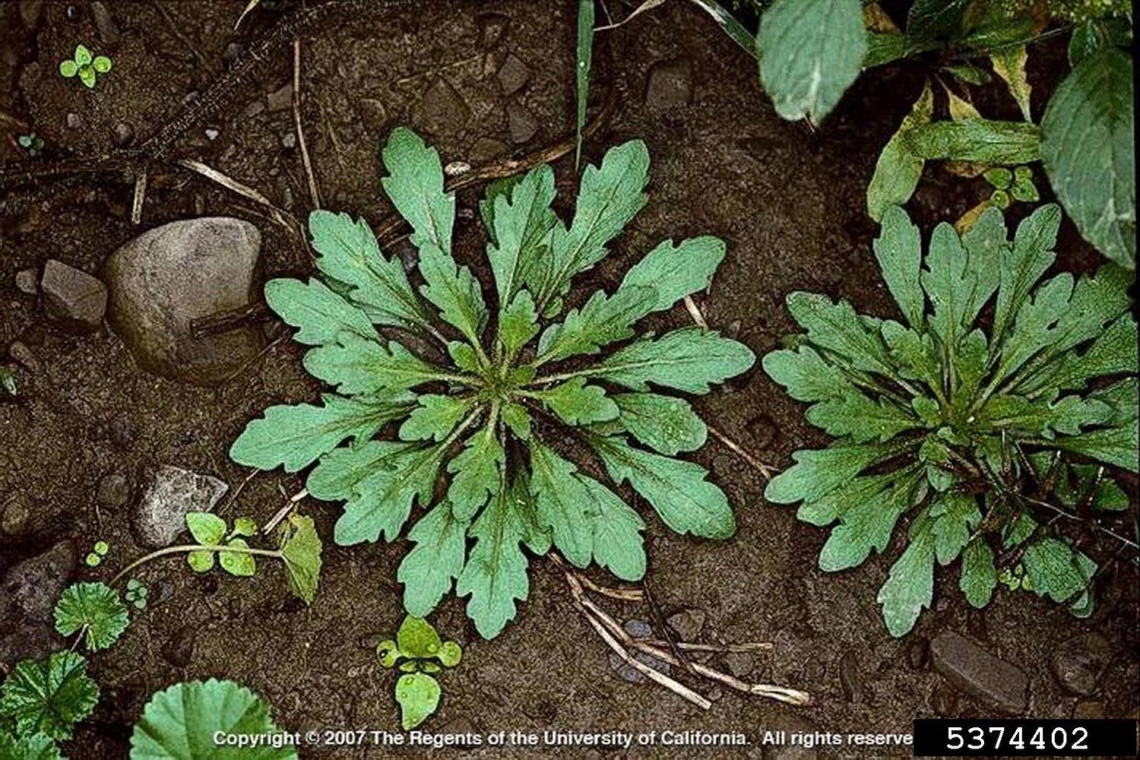Image

Horseweed
Max Licher, swbiodiversity.org/seinet
Common Name(s)
Horseweed
Canadian horseweed
Scientific Name
Conyza canadensis
Family
Sunflower or Aster family (Asteraceae)
Reasons for concern
This plant is becoming a major weed problem. It produces thousands of tiny seeds that are easily dispersed far and wide by wind, and they can germinate over a very long period of time. It is reported to be resistant to glyphosate. It also contains allelopathic (toxic) chemicals that suppress the growth of nearby native vegetation.
Special note
Native plants have evolved together over centuries with pollinators, birds, wildlife, and other native plants. We may not understand the role this native plant plays in our environment, so we may not want to completely eliminate it.
Classification
Native
Botanical description
Erect, tall plant with many branches at top of stem.
Leaves
Bristly leaves alternate, crowded on either side of stem. Upper leaves are lance-shaped to long and narrow. Leaves at ground level are spoon-shaped to long and narrow, arranged in a circular formation (rosette).
Stem(s)
Usually a single erect stem 1 to 5 feet tall. Sometimes several stems. Unbranched at the base but many branches above. Stem can re-grow after being cut.
Flowers
Flower head (inflorescence) of many small, inconspicuous flowers with yellow center and white (sometimes purplish) ray petals, at top of stem. Blooms June through September.
Seeds
Seed production June through September.
Roots
Taproot
Native to
North American grasslands
Where it grows
Disturbed areas, waste places, pastures, roadsides at elevations of 900 to 8,200 feet. Likes sun. Widespread throughout North America.
Lifecycle
Winter or summer annual
Reproduction
By seed
Weedy Characteristics
Horseweed can easily take over disturbed areas since it seeds prolifically and spreads rapidly. It will re-grow if the stem is broken off. It also contains allelopathic (toxic) chemicals that suppress the growth of nearby native vegetation.
Control Strategies
Do not let them go to seed. Hand pull or dig out seedlings. Dig out more mature plants with the roots, but be careful not to disturb the soil too much. Step down any loose dirt to prevent seeds from finding a welcome environment to germinate. If you cut off stem or cannot get the root, check back to see if plant has started to re-grow. Plant desirable native species to outcompete invasive plants.
References
- Horseweed University of California Agriculture and Natural Resources - IPM Weed gallery
- Canadian Horseweed USDA NRCS Plant Guide






